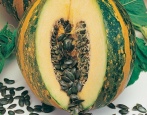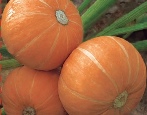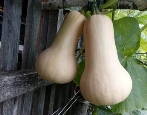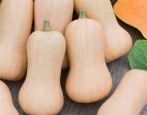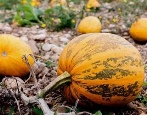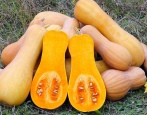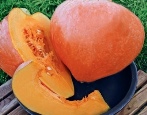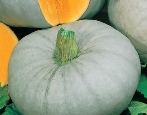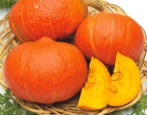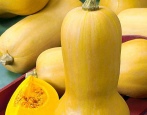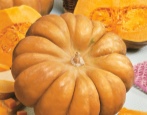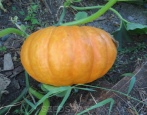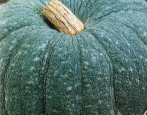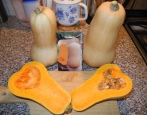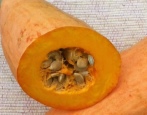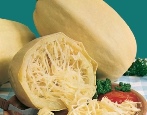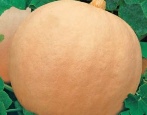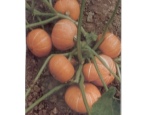
- Authors: Nastenko N.V., Kachainik V.G., Gulkin M.N.
- Year of approval: 2013
- Lash length, m: until 3
- Leaf color: dark green
- The form: flat-round
- Weight, kg: 4-6, up to 15
- Coloration: dark pink, no pattern
- Color of the pulp: orange
- Pulp (consistency): juicy and crispy
- Taste: sweet
Pumpkin Honey dessert is a high-yielding large-fruited variety that belongs to the group of honey pumpkins. Due to its unpretentiousness and high yield, the culture is suitable for cultivation in various climatic latitudes and is widely used by both private farmers and large agricultural holdings. Ripe fruits exude a pleasant honey aroma and have a nutmeg flavor, which makes them indispensable in culinary terms. Delicious and nutritious side dishes, casseroles, soups, juices and purees can be found not only in home cooking, but also in large restaurants and canteens.
Description of the variety
Pumpkin Honey dessert - the result of painstaking selection work of engineers and vegetable growers of the domestic agricultural corporation "AELITA", in particular, Nastenko N.V., Kachainik V.G. and Gulkina M.N. In 2013, the culture was officially registered and entered the wholesale and retail sale. A large-fruited dessert pumpkin variety belongs to the category of honey crops, due to the fact that the fleshy part of the plant has a rich, but at the same time pleasant taste of honey. The improved properties of the variety and the ease of cultivation make it possible to cultivate it in various climatic latitudes, including in conditions of risky farming. The plant can be seen both on private household plots and on plantations of large farms. The honey taste of the vegetable with subtle notes of nutmeg makes the culture versatile in culinary terms. Housewives from around the world use it both for making sweet desserts, cereals, side dishes and casseroles, and as the main ingredient in the process of making mashed potatoes, juices and jams.
Advantages:
universal purpose;
honey taste with nutmeg notes;
high yield;
the formation of large fruits;
early harvesting period;
absence of significant mechanical damage during transportation;
rich vitamin and mineral composition;
long storage period without loss of taste and vitamin qualities;
high level of resistance to the most common diseases;
resistance to temperature fluctuations.
Disadvantages:
long whips;
exactingness to the nutritional value of the soil;
the presence of a large area for cultivation.
Characteristics of the appearance of plants and fruits
Pumpkin Honey dessert is a large-fruited early variety for universal use. Long lashes of an adult plant can reach 3-4 meters. The rich green leaf plates are large and slightly dissected. Stems and leaf blades have a coarse, rough structure. The branched roots go deep into the soil and provide the culture with all the necessary nutrients, even during unfavorable weather conditions. During the flowering period, voluminous inflorescences of a rich yellow hue are formed on the plant.
On one adult and healthy plant, from 2 to 5 large flattened fruits can form. The entire surface of a ripe vegetable is divided into equal fragments and has a notch near the stalk. Pumpkin weight ranges from 5 to 15 kg and depends on the region of cultivation and characteristics of agricultural care.The thin leathery cover has a small knobby structure and a monochromatic shade, which can be either red-orange or dark pink. Juicy and very massive, fleshy inner part is colored orange and has a crunchy texture. Small seed nests consist of medium sized planets filled with medium white elliptical seeds. Particular attention should be paid to the chemical composition of the vegetable, which contains up to 36% carotene, as well as a huge amount of essential vitamins and minerals.
Purpose and taste
Excellent taste indicators, as well as honey taste with nutmeg notes, make the vegetable indispensable in the preparation of a huge number of culinary masterpieces. Pumpkin can be used to make sweet desserts, milk and dairy-free cereals, side dishes, soups, casseroles and candied fruits, as well as nutritious and vitamin juices and purees that can be used in diet menus and in the diet of young children. Despite the long storage period, the variety can be frozen, dried and canned. Due to the presence of a huge amount of vitamins and useful microelements, pumpkin is an indispensable vegetable in the season of colds and winter epidemics. A distinctive feature of the variety is the ability to eat not only pulp, but also large and fresh inflorescences, which can be fried in breading and stuffed depending on taste preferences.
Ripening terms
The Honey Dessert variety belongs to crops with an early ripening period, in which the harvest can be carried out 95-100 days after the appearance of the first shoots, which falls at the end of August - beginning of September.
Yield
The large-fruited, unpretentious variety belongs to high-yielding crops that are capable of forming an average of 2.3 to 8.7 kg of juicy and aromatic fruits on a 1 m2 plot. The amount of harvest directly depends on the climatic conditions of the region of cultivation, seasonal weather factors, as well as on the exact observance of all agrotechnical rules of cultivation.
Growing and care
To obtain large and juicy fruits, the culture must be planted in well-lit areas, protected from drafts. Pumpkin prefers sandy and light loamy soils. Sowing seeds for seedlings should be carried out in the second decade of April, and sowing seed into the ground is carried out at the end of May. In the same period, seedlings can also be transplanted. The classic planting scheme is 100 cm by 100 cm.The sowing depth is no more than 5 cm.
Planted plants must be regularly watered, weeded, fertilized and weed. We should not forget about preventive treatment for diseases and pests.
